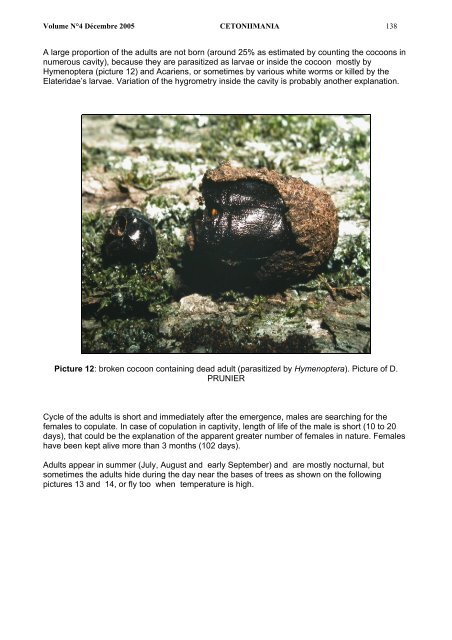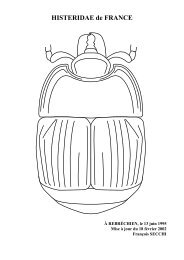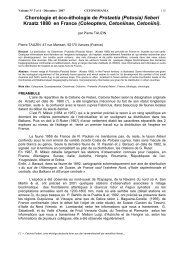Osmoderma eremita
Osmoderma eremita
Osmoderma eremita
Create successful ePaper yourself
Turn your PDF publications into a flip-book with our unique Google optimized e-Paper software.
Volume N°4 Décembre 2005 CETONIIMANIA 138<br />
A large proportion of the adults are not born (around 25% as estimated by counting the cocoons in<br />
numerous cavity), because they are parasitized as larvae or inside the cocoon mostly by<br />
Hymenoptera (picture 12) and Acariens, or sometimes by various white worms or killed by the<br />
Elateridae’s larvae. Variation of the hygrometry inside the cavity is probably another explanation.<br />
Picture 12: broken cocoon containing dead adult (parasitized by Hymenoptera). Picture of D.<br />
PRUNIER<br />
Cycle of the adults is short and immediately after the emergence, males are searching for the<br />
females to copulate. In case of copulation in captivity, length of life of the male is short (10 to 20<br />
days), that could be the explanation of the apparent greater number of females in nature. Females<br />
have been kept alive more than 3 months (102 days).<br />
Adults appear in summer (July, August and early September) and are mostly nocturnal, but<br />
sometimes the adults hide during the day near the bases of trees as shown on the following<br />
pictures 13 and 14, or fly too when temperature is high.





